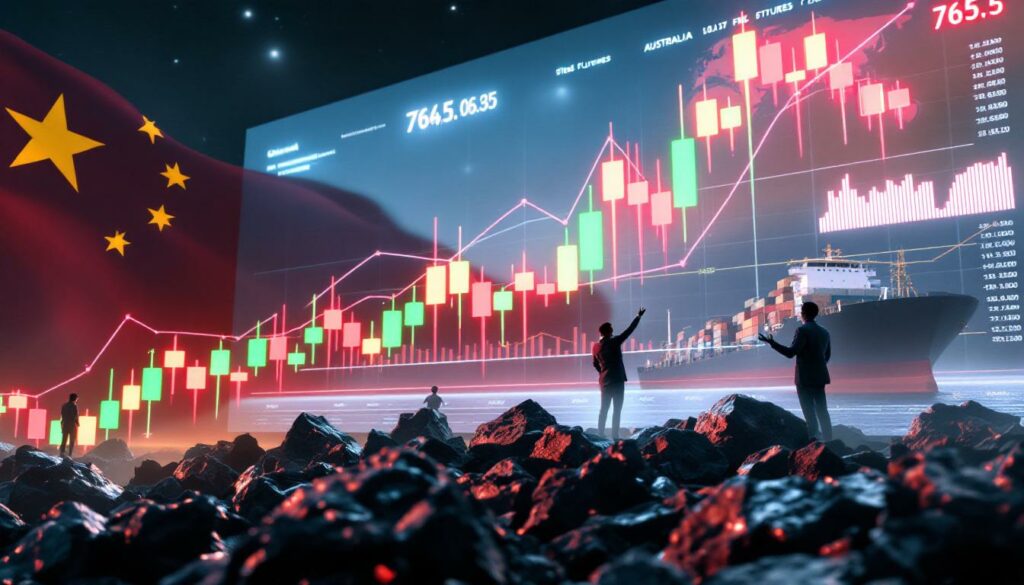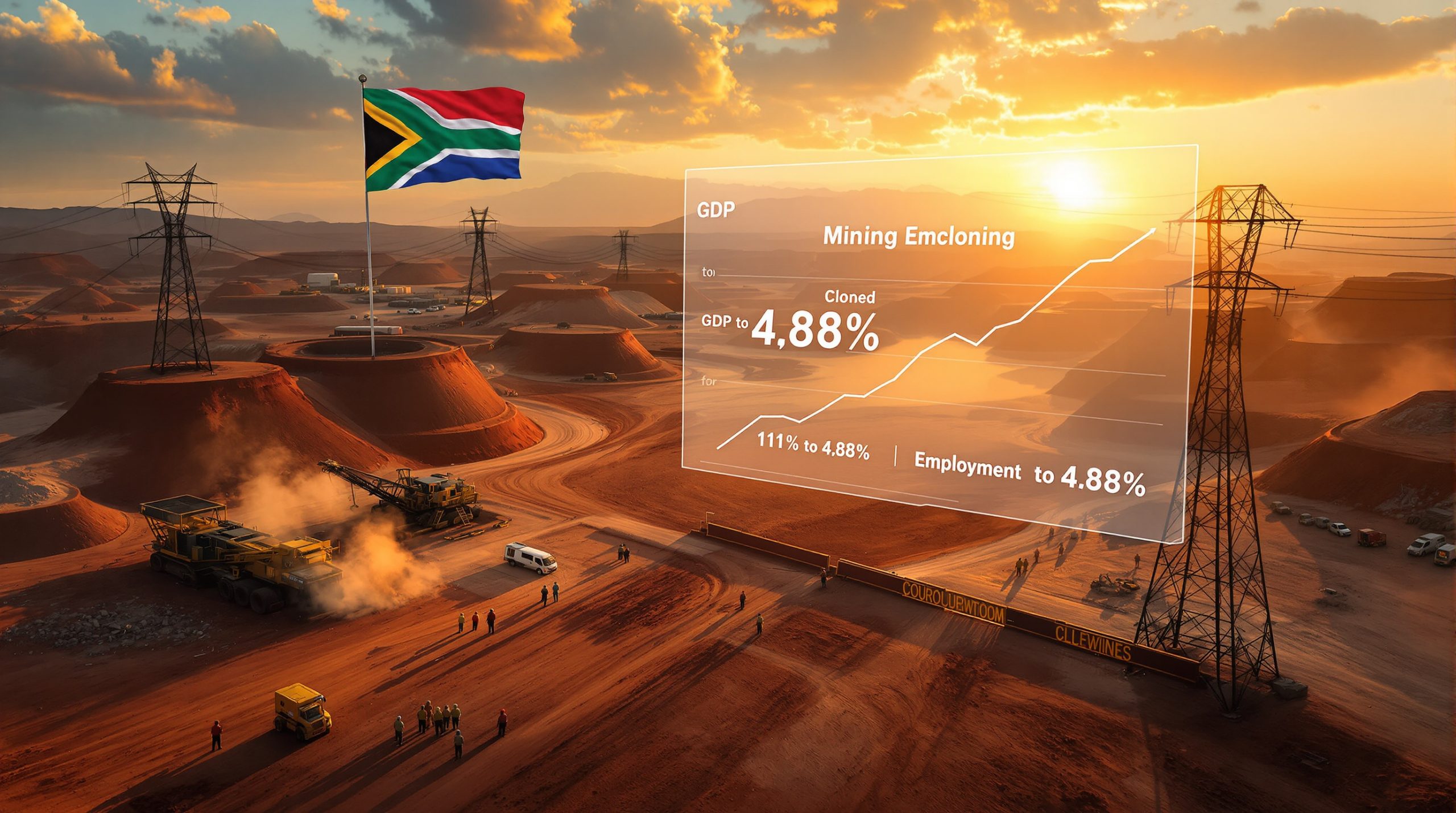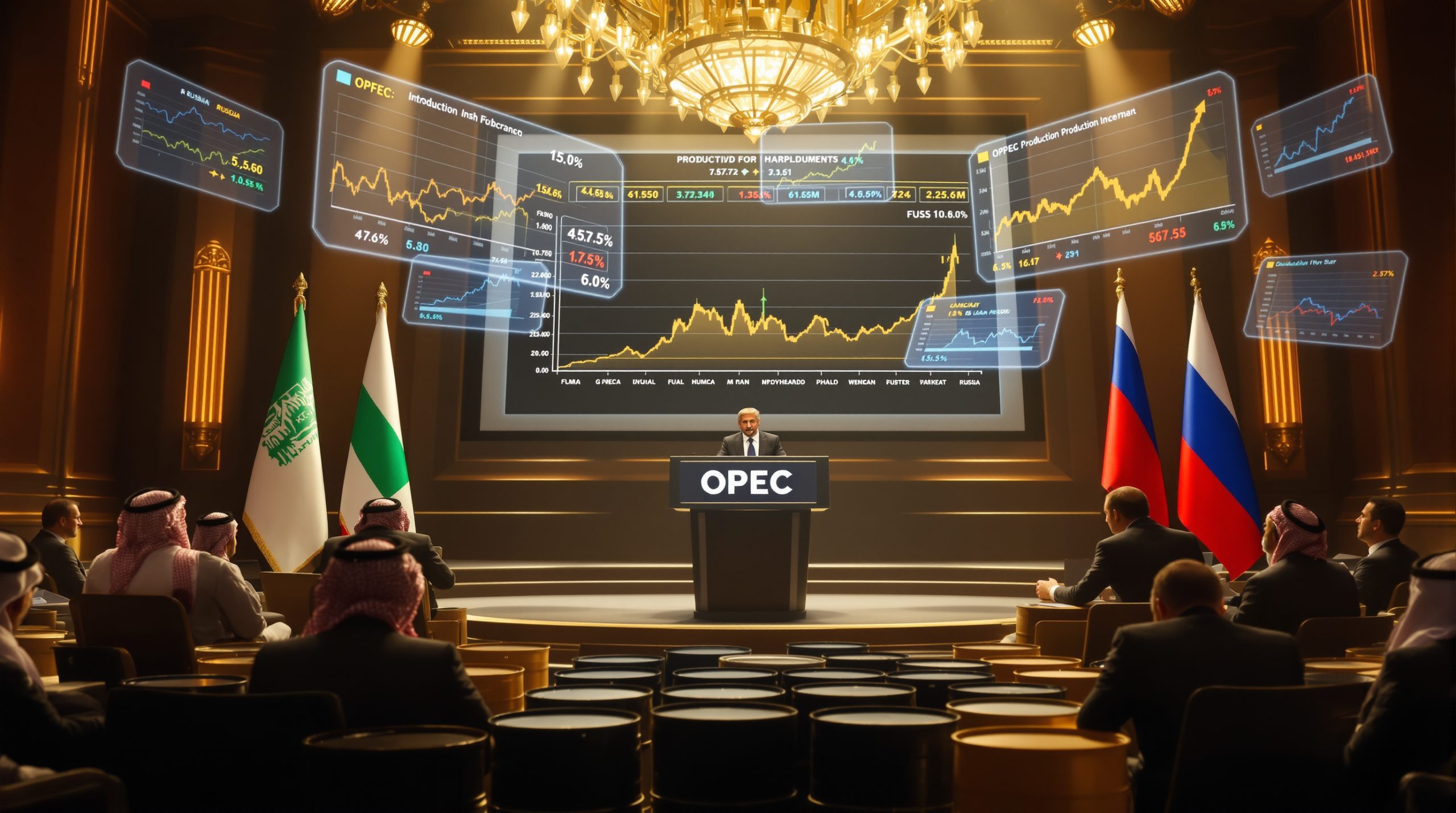Understanding Dalian Iron Ore Futures: Market Dynamics and Trading Strategies
The Dalian Commodity Exchange (DCE) iron ore futures represent one of China's most significant commodity markets, serving as a critical price discovery mechanism for the global steel industry. With daily trading volumes regularly reaching millions of contracts, these futures have become essential tools for both physical market participants and financial traders. Furthermore, understanding iron ore price trends has become crucial for investors looking to navigate this complex market.
Definition and Market Overview
Dalian iron ore futures contracts operate as standardized agreements to buy or sell iron ore at a predetermined future date. The most actively traded contract as of July 10, 2025, is the I2509 contract, which closed at 763.5 points, marking a significant 3.67% surge in a single trading session according to Shanghai Metal Market (SMM) data.
The DCE launched iron ore futures trading in 2013, becoming the first exchange in China to offer this commodity. Since then, it has evolved into a benchmark for both domestic and international iron ore pricing, with influence extending well beyond China's borders.
Market Insight: "The Dalian iron ore futures market serves as a critical barometer for the health of China's steel industry, which consumes over 70% of global seaborne iron ore."
Contract sizes are standardized at 100 metric tons per contract, with prices quoted in Chinese yuan (CNY) per ton. Trading occurs in both day and night sessions, allowing market participants to react to global developments around the clock.
Key Contract Specifications
Dalian iron ore futures contracts specify delivery of 62% Fe content iron ore fines, the industry standard grade. This specification ensures consistency in the quality of the underlying commodity, making the contracts reliable hedging instruments for steel producers.
Key specifications include:
- Trading unit: 100 metric tons per contract
- Price quotation: CNY per ton
- Minimum price fluctuation: 0.5 CNY/ton
- Daily price limit: 8% above or below the previous settlement price
- Contract months: January through December
- Last trading day: 10th day of the delivery month
Margin requirements typically range from 5-15% depending on market volatility, with position limits enforced to prevent market manipulation. Settlement can occur through either physical delivery or cash settlement, though most positions are closed before delivery.
How Do Dalian Iron Ore Futures Impact Global Markets?
Relationship with Physical Iron Ore Markets
Dalian iron ore futures serve as a price discovery mechanism that influences physical iron ore transactions throughout Asia. The futures prices often lead physical market negotiations, with spot deals frequently referencing DCE settlements as benchmarks.
The relationship between futures and physical markets can be observed in trading behavior. As noted in the SMM Report from July 10, 2025, when futures prices surged by 3.67%, "traders showed a strong willingness to sell" while "steel mills adopted a cautious wait-and-see attitude," demonstrating how futures price movements immediately impact physical market sentiment.
Physical cargo negotiations for Australian and Brazilian iron ore imports into China increasingly reference Dalian futures prices rather than traditional indices, reflecting the growing prominence of the DCE as a global price benchmark.
Global Market Influence
While the Singapore Exchange (SGX) offers competing iron ore derivatives that are more accessible to international traders, Dalian futures exert considerable influence over global iron ore pricing due to China's dominant position in consumption.
The DCE market affects:
- Export pricing decisions by major producers in Australia and Brazil
- Steel production planning in mills worldwide
- Investment decisions in new mining projects
- Shipping and freight markets through anticipated demand signals
Price movements in Dalian frequently precede similar movements in other global commodity markets, making these futures an essential monitoring tool for international commodity traders.
What Drives Dalian Iron Ore Futures Price Movements?
Supply-Side Factors
Production volumes from Australia and Brazil—the world's largest iron ore exporters—significantly impact Dalian futures prices. Any disruptions at major mining operations can trigger immediate price responses.
Key supply factors include:
- Weather events affecting port operations in Western Australia
- Operational challenges at Vale's Brazilian mines
- Infrastructure bottlenecks along the supply chain
- New project developments adding to global capacity
Shipping constraints and freight rates also play crucial roles, as transportation costs can account for a significant portion of delivered iron ore prices to Chinese ports. Additionally, changes in iron haulage operations can significantly impact supply chain efficiency and overall market dynamics.
Demand-Side Dynamics
Chinese steel production rates serve as the primary demand driver for iron ore futures. As the world's largest steel producer, China's industrial activity closely correlates with iron ore pricing.
The SMM Report from July 10, 2025, highlighted how "steel mills adopted a cautious wait-and-see attitude" during a rapid price increase, demonstrating the immediate impact of demand-side sentiment on market dynamics. The report noted that "market transaction atmosphere was average" despite the price surge, indicating potential hesitation among physical market participants.
Seasonal patterns also influence demand, with construction activity typically increasing in spring and autumn while slowing during winter months and summer heat. Recent iron ore demand insights suggest a complex interplay between industrial production and inventory management practices.
Macroeconomic Influences
Broader economic factors exert significant influence on Dalian iron ore futures:
- Chinese GDP growth rates directly impact infrastructure and construction activity
- Monetary policy decisions affect financing costs for steel-intensive projects
- Currency fluctuations between USD and CNY alter the economics of iron ore imports
- Government stimulus programs targeting infrastructure can rapidly shift demand forecasts
Market Context: "The 3.67% surge in Dalian iron ore futures on July 10, 2025, occurred amid complex market dynamics where traders showed selling willingness despite price strength, suggesting potential divergence between financial and physical markets." — Based on SMM Report, July 10, 2025
How Do Traders Approach the Dalian Iron Ore Market?
Market Participant Behavior
Different market participants exhibit distinct behavior patterns in Dalian iron ore futures trading. The SMM Report from July 10, 2025, provides a clear example of these dynamics:
- Traders showed "strong willingness to sell" during the price surge, suggesting potential profit-taking
- Steel mills adopted a "cautious wait-and-see attitude" due to the rapid price increase
- Transaction atmosphere remained "average" despite significant price movement
This behavior illustrates a common pattern where rapid price movements trigger divergent responses: traders seek to capitalize on volatility while physical users become more cautious about procurement decisions.
Steel mills typically employ futures for procurement hedging, securing prices for future production needs. Trading houses, meanwhile, often engage in arbitrage between physical and futures markets, capitalizing on temporary price discrepancies.
Speculative investors, who may have no intention of taking physical delivery, provide essential liquidity but can also amplify price movements during periods of uncertainty.
Technical Analysis Approaches
Technical analysts in the Dalian iron ore market focus on several key indicators:
- Price support and resistance levels based on historical trading ranges
- Volume patterns that confirm or contradict price movements
- Open interest changes that signal new money entering or leaving the market
- Momentum indicators like RSI and MACD that help identify overbought or oversold conditions
The technical landscape often shows distinct seasonality, with historically stronger periods in early spring and autumn when construction activity peaks in China.
What Trading Strategies Work in Dalian Iron Ore Futures?
Fundamental Trading Approaches
Successful fundamental traders in Dalian iron ore futures closely monitor:
- Port inventory levels across major Chinese ports, which indicate supply/demand balance
- Steel mill profit margins, which often predict future iron ore purchasing behavior
- Steel product prices relative to iron ore costs, revealing compression or expansion of margins
- Production cost curves of major miners, establishing price floors during market downturns
Regular monitoring of these fundamentals helps traders anticipate price movements before they manifest in technical indicators. Moreover, staying informed about the latest iron ore price forecast can provide valuable context for fundamental trading decisions.
Trading Insight: "Effective fundamental analysis in iron ore markets requires understanding the relationship between steel mill margins and purchasing behavior. When margins compress, mills typically become more price-sensitive and adopt the 'wait-and-see' attitude observed on July 10, 2025."
Technical Trading Methods
Effective technical trading strategies in Dalian iron ore include:
- Trend-following systems using moving averages to identify and ride directional moves
- Mean reversion strategies that capitalize on overextended price moves, particularly following news-driven spikes
- Breakout trading targeting key technical levels with confirming volume
- Spread trading between different contract months to capture seasonal patterns
The 3.67% surge on July 10, 2025, represents a potential breakout scenario that technical traders might have capitalized on, though the SMM Report's mention of "average" transaction atmosphere suggests limited follow-through volume.
Risk Management Techniques
Prudent risk management is essential in the volatile Dalian iron ore market:
- Position sizing should account for the 8% daily price limit and typical volatility patterns
- Stop-loss orders must balance protection against whipsaw price action
- Correlation hedging with related markets like coking coal or steel rebar can reduce overall portfolio risk
- Scenario analysis preparing for supply disruptions or policy changes helps anticipate black swan events
Professional traders typically limit position size to ensure that maximum daily moves won't exceed predetermined portfolio risk parameters.
What Are the Current Market Conditions for Dalian Iron Ore?
Recent Price Action Analysis
The most recent data from July 10, 2025, shows the I2509 contract closing at 763.5 points, representing a significant 3.67% surge in a single trading session (SMM Report, July 10, 2025).
This price action occurred amid interesting market dynamics:
- Traders displayed a "strong willingness to sell" despite rising prices
- Steel mills adopted a "cautious wait-and-see attitude" during the rapid increase
- The "market transaction atmosphere was average" despite the notable price movement
These observations suggest a potential disconnect between futures market momentum and physical market acceptance, a situation that often precedes either a reversal or consolidation. Recent analysis of iron ore price decline trends provides important context for understanding these market dynamics.
Market Sentiment Indicators
Current market sentiment indicators reveal complex dynamics:
- Steel mill behavior: The "wait-and-see attitude" reported by SMM indicates cautious procurement planning
- Trader selling willingness: Despite price strength, sellers remained active, suggesting potential resistance ahead
- Transaction atmosphere: Described as "average," indicating neither panic buying nor distressed selling
- Price acceptance: Characterized as "weak" due to the rapid increase, suggesting potential resistance to sustained higher levels
These sentiment factors collectively suggest a market potentially approaching resistance levels, with physical users reluctant to chase higher prices.
How Do Iron Ore Futures Correlate With Other Markets?
Relationships With Steel Product Futures
Dalian iron ore futures typically maintain strong correlations with steel product futures, though these relationships can temporarily decouple during supply shocks or speculative activity.
Key relationships include:
- Input-output spread: The difference between iron ore costs and steel product prices determines mill profitability
- Processing margin: This spread between raw material costs and finished steel prices drives purchasing decisions
- Inventory cycle correlations: When steel inventories rise while prices fall, iron ore typically follows with a lag
Traders often monitor these intermarket relationships for early signals of directional changes in the iron ore market. For comprehensive analysis of iron ore futures pricing, many traders refer to the Dalian Commodity Exchange's official website.
Cross-Commodity Correlations
Iron ore futures maintain important correlations with other commodity markets:
- Coking coal and coke: As fellow steelmaking inputs, these markets typically move in tandem
- Base metals: Copper and aluminum often correlate with iron ore as indicators of industrial activity
- Energy markets: Coal and oil prices affect mining and transportation costs
- Broad commodity indices: Provide context for whether iron ore is following or diverging from macro commodity trends
Understanding these correlations helps traders identify whether price movements are iron ore-specific or part of broader market trends. Real-time data on these correlations can be found on platforms like Trading Economics' commodity dashboard.
What Are Expert Forecasts for Dalian Iron Ore Futures?
Short-Term Price Projections
Short-term forecasts must consider the recent price action and market dynamics:
- The 3.67% surge on July 10, 2025, coupled with "strong willingness to sell" among traders, suggests potential near-term resistance
- Steel mills' "wait-and-see attitude" indicates reluctance to chase higher prices, potentially limiting upside momentum
- The "average" transaction atmosphere despite significant price movement suggests limited conviction behind the rally
Technical analysts typically monitor the 750-775 point range as an important resistance zone based on historical price patterns, with the current 763.5 level sitting squarely within this range.
Forecast Disclaimer: All price projections represent opinions based on current market conditions and historical patterns. Actual market movements may differ significantly due to unforeseen events or changing fundamentals.
Long-Term Market Outlook
Long-term outlooks for Dalian iron ore futures must consider structural changes in the steel industry:
- China's decarbonization goals will gradually shift production toward electric arc furnaces, potentially reducing iron ore demand
- New supply projects scheduled to come online through 2027 may create periodic oversupply conditions
- Evolving trade relationships between China and major iron ore suppliers could alter traditional pricing dynamics
- Steel capacity rationalization policies in China will affect long-term demand patterns
These structural factors suggest increasing price volatility in coming years as the market adapts to changing industry fundamentals.
FAQ About Dalian Iron Ore Futures
How do Dalian iron ore futures differ from SGX iron ore derivatives?
Dalian and Singapore iron ore derivatives differ in several important ways:
| Feature | Dalian (DCE) | Singapore (SGX) |
|---|---|---|
| Currency | CNY (Chinese yuan) | USD (US dollar) |
| Contract size | 100 metric tons | 100 metric tons |
| Reference grade | 62% Fe content | 62% Fe content |
| Market access | Restricted for foreign investors | Open to global participants |
| Trading hours | Day and night sessions (China time) | Nearly 24 hours |
| Liquidity | Higher for domestic Chinese traders | Higher for international participants |
The DCE market tends to reflect domestic Chinese sentiment more directly, while SGX often incorporates broader global perspectives due to its international participant base.
What causes the disconnect between futures and physical prices?
Several factors can create temporary disconnects between futures and physical markets:
- Speculative positioning in futures markets that may not reflect physical supply-demand balances
- Delivery mechanics that make physical settlement more complex than financial settlement
- Quality variations between standardized futures contracts and diverse physical cargoes
- Time lag effects between futures pricing and physical cargo negotiations
The "weak acceptance" of higher prices noted in the July 10, 2025 SMM Report exemplifies this disconnect, where futures prices moved ahead of physical market willingness to transact.
How can investors access Dalian iron ore futures markets?
Access options for different investor types include:
- Domestic Chinese investors: Direct access through Chinese futures brokers
- Foreign institutional investors: Access through Qualified Foreign Institutional Investor (QFII) programs
- International retail investors: Indirect exposure through ETFs or futures brokers offering synthetic access
- Physical market participants: Potential for direct access through Chinese subsidiaries
Regulatory requirements include account documentation, margin deposits, and adherence to position limits established by the exchange and Chinese regulators.
What are the key trading hours and market events?
The Dalian iron ore trading schedule includes:
- Day session: 9:00-11:30 AM and 1:30-3:00 PM China Standard Time
- Night session: 9:00 PM-2:30 AM China Standard Time
- No trading: Chinese national holidays
Critical data releases that impact the market include:
- Weekly port inventory reports (typically Fridays)
- Monthly steel production figures from China's National Bureau of Statistics
- Quarterly production reports from major miners like Rio Tinto, BHP, and Vale
- Policy announcements from China's environmental and industrial planning agencies
Key Considerations for Dalian Iron Ore Futures Traders
Market Monitoring Essentials
Successful iron ore futures traders monitor several critical data points:
- Port inventory levels across major Chinese ports (weekly)
- Steel mill utilization rates as reported by industry associations
- Price spreads between different iron ore grades and qualities
- Policy announcements affecting environmental regulations or production restrictions
Want to Spot the Next Major Mineral Discovery Before the Market?
Discovery Alert's proprietary Discovery IQ model delivers instant notifications of significant ASX mineral discoveries, providing you with actionable investment insights ahead of the broader market. Begin your 30-day free trial today at https://discoveryalert.com.au/discoveries/ and position yourself to capitalise on potentially transformative opportunities.




